The summer vacation has barely reached the halfway mark, yet Back to School is already in full swing, prompting some to buy an iPad or iPad Pro for their children. AppleInsider details what parents should look for when acquiring an iPad to arm their offspring for the upcoming school or college year.
In the not-too-distant future, droves of children will be heading into education. Be it into school or to higher education via a college or university, all students deserve to have a great learning experience, and sometimes that depends on the tools they are provided.
As the iPad has improved over time, and with the advent of iPadOS shaking up the tablet form factor once again, the decision to opt for a MacBook or an iPad as the primary computing device has become even harder to make. For 2019, it seems that more people will look at the iPad and consider it good enough for their needs, rather than the traditional notebook in the form of a MacBook Air or MacBook Pro.
However, even after deciding to go for an iPad, the decision still remains on which iPad model to go with, as the iPad may be enough but the iPad Pro may be a better option for some users. It is a complicated question, but if you look at it from the viewpoint of what the student needs, it becomes much clearer as to what they may ultimately want.
Elementary and middle school
In terms of what the average kid going through the early years of the education treadmill needs, it's hard to argue for anything on the more pricey end of the spectrum. While it would be cool for a child to show up at class with a massive iPad Pro in their bag, the bragging rights and ability to play Fortnite in the highest quality possible pale in comparison to it being acquired by a school friend or becoming acquainted with a wall or other screen-cracking surface.
It is also highly unlikely that the computing needs of elementary and middle-school students will require that much processing power at all, save for occasional video editing tasks for school projects. Having a tool to do the work is essential, but there's no point buying a jewel-encrusted hammer that promises to put nails into wood with 50% better efficiency when the user's going to be just as happy with an ordinary and cheap version.
In short: You will want to acquire an iPad, not an iPad Pro.
The question then becomes which of the various models are worth acquiring. If buying brand new, the options are the 2018 iPad, the 2019 iPad Air, and the fifth-generation iPad mini, also from 2019.
The 2018 iPad is the de-facto standard iPad model, and is more than powerful enough to perform almost all of the tasks a classroom could set, with its A10 Fusion processor and 2 gigabytes of memory. It is in the familiar 9.7-inch form factor with an also-unchanged 1536 by 2048 resolution, and offers Apple Pencil support, a rear 7-megapixel camera capable of 1080p video capture, and 720p slo-mo video at 720p.
It is also the cheapest of the range at $329, but this only gets you 32 gigabytes of storage, but a 128-gigabyte option brings it up to $429 (details on how to save money on your iPad purchase can be found near the bottom of this guide). Adding cellular connectivity is an extra $130, but since we're talking lower school levels here, it's better to spend that money on buying an Apple Pencil.
New for 2019 is the relaunched iPad Air, which borrows the body design from the 10.5-inch iPad Pro to offer a cheaper alternative iPad with a larger P3 wide-color display, complete with TrueTone and a 2224-by-1668 resolution.
Packing the newest A12 Bionic chip with Neural Engine, it again is capable of providing more than adequate processing performance, but while the rear camera is the same resolution as the iPad's version, the front upgrades the 1.2-megapixel FaceTime HD camera to a 7-megapixel version, with both offering wide color capture capabilities and auto HDR.
The increased size also makes it more expensive at $499 for the 64 gigabyte model and $649 for the 256 gigabyte version. Again, cellular is an extra $130, though your money is better put towards an Apple Pencil or a Smart Keyboard in this particular case.
Door number 3 is the updated iPad mini, which squeezes practically everything offered in the iPad Air into a compact frame, using a 7.9-inch 2048-by-1536 display. It could be argued that this may be a better option for younger users, as the scaled-down size and weight may be more manageable in the long run.
It is also in the middle of the two other models in terms of cost, starting from $399 for the 64-gigabyte capacity model, growing to $549 for the 256 gigabyte version, and with cellular an extra $130 on top.
For the target users in this instance, the best choice is going to be between the value-proposition iPad and the improvements and svelte nature of the iPad mini.
High school and college
As the user gets older and closer to going to college, their needs tend to increase, and depending on what they are doing in high school or their university course, they may benefit from shifting to an iPad Pro. Courses that are content or processing-intensive, like those that involve video editing, can necessitate the move to the more expensive models.
This isn't always required, as courses where a tablet could be used for note-taking and writing essays could probably be completed on an iPad. In some cases, it could be worth opting for an iPad over an iPad Pro to save some much-needed cash for other items.
As the students are older, it is also presumably more likely that they will take care of their expensive hardware than at an earlier age, so a purchase of a pricier model is less of a risk. For high school students, it could also be a way for some parents to show trust in their offspring, before they head off to lead a more independent life on campus and away from home for the first time.
The iPad Pro range consists of two models that have identical specifications and features, with the main difference being the display sizes of 12.9 inches and 11 inches. Both Liquid Retina displays have ProMotion technology and TrueTone, with resolutions of 2732 by 2048 pixels and 2388 by 1668, respective of size.
Inside is an A12X Bionic chip with Neural Engine, a step up from what's offered in the iPad Air and iPad mini, as Apple considers it to have a "64-bit desktop-class architecture," due to its higher performance. There are also other major differences, such as the switch over to Face ID instead of Touch ID, and compatibility and on-device charging for the second-generation Apple Pencil.
The use of a USB-C connector instead of Lightning means it can be used with a wide array of other hardware, such as displays, cameras, or importing to Photos from external USB storage. It is even possible to recharge an iPhone using the connector, turning the iPad Pro into an impromptu portable battery.
There are also many smaller improvements that the Pro line has over the regular iPad, such as the use of a TrueDepth camera at the front instead of a FaceTime HD camera, a rear 12-megapixel camera with quad-LED True Tone flash, 4K video recording at up to 60fps, and quad speakers.
These extras also push up the cost, bringing the base model iPad Pro with 64 gigabytes of capacity to $799 for the 11-inch model, $999 for the 12.9-inch variant, with cellular a $150 add-on. Given the performance, the iPad Pro is also where you find the largest capacity options of 512 gigabytes and 1 terabyte, with the latter priced at $1,549 and $1,749, depending on screen size.
What about the Apple Pencil?
Apple's pressure-sensitive stylus isn't necessarily warranted for most users. Sure, it's handy to have something that can be used to produce gorgeous artworks or to improve your workflow, but the vast majority of users will be able to get by with using their finger, as was the case for many years before Apple introduced Apple Pencil support to the iPad lineup.
For $99 and $129 for the first-generation and second-generation Apple Pencil, it is also quite an expensive accessory, but it could be a useful purchase for taking handwritten notes or making some inspired doodles. The $129 cost for the version compatible with the iPad Pro also doesn't seem that much when compared with the iPad Pro's price, which may encourage users to splash out on one.
Younger users may not necessarily care about having the pressure sensitivity or using an official Apple Pencil for drawing, making the use of an alternative more viable. Spendthrifts may also want to seek out other implements, especially if they are trying to skimp on the non-essentials.
Two viable alternatives are the Logitech Crayon and the Adonit Note, which sell for $69 and $49 respectively. Neither offer pressure sensitivity, but they both work with the Pencil writing system to be able to produce accurate drawings, and their price makes them less painful to replace if lost.
Second-hand and refurbished
Those looking to get the most out of their purchases may want to look towards the pre-owned market. Depending on the needs and the budget, there may be some money to be saved by going for an older iPad or iPad Pro model, and in some cases, benefits.
Take for example the 9.7-inch iPad Pro, which Apple sells in its Certified Refurbished store from $419 for the 32-gigabyte Wi-FI model, $499 for 128 gigabytes, and $589 for 256 gigabytes. While the model is three years old, and using the older (but still extremely usable A9X chip,) it offers the True Tone Wide Color P3 display, a 12-megapixel rear camera upgrade along with the True Tone flash, quad speakers, a front-facing 5-megapixel FaceTime HD camera, and Smart Keyboard support.
Sure, it is an older model, and it is still a little bit more expensive than the stock iPad, but you end up getting some of the iPad Pro benefits in a cheaper package, and at a size that may be more comfortable for smaller hands than the 11-inch and 12.9-inch versions.
If processing performance isn't that much of an issue, there is a lot of exploring that could be made in the refurbished shop. This also extends to current models.
Want all the comforts of the current iPad but at a cheaper price? It's possible to get the 32-gigabyte Wi-Fi sixth-generation iPad for $279, $50 off the normal base price. Yes, it is refurbished, but through Apple it gains the same one-year warranty as a new iPad, as well as a new battery and outer shell, and having been thoroughly checked over by the manufacturer.
To pinch a penny or two, refurbished could be the way to go. However, those who were looking towards buying an iPad Pro and need the performance it offers may want to err towards buying the newer models instead of seeking out earlier generations.
Be wary of going for models that were released years ago, as sometimes the specifications may not be what you want. Older models may not offer the processing performance you require, and for iPads released before 2018, they lack Apple Pencil support entirely.
There is also the question of operating system support, as Apple does periodically exclude older models from being able to use newer releases of iOS and the incoming iPadOS. If you buy an older iPad, you run the risk of not being able to upgrade the software.
Lastly, make sure you are buying from a reputable source when going down this route. While Apple offers warranties and other changes, not all retailers will be as thorough, and there will be minimal support — if any — when acquiring the devices from individuals who may not disclose if there's anything wrong with the unit.
Programs from well-recognized retailers include Amazon, which offers pre-owned products from third-party sellers that are backed by a 90-day, supplier-backed guarantee through its Renewed portal. Amazon states renewed products "look and work like new," but may come with generic packaging and accessories.
Best Buy also sells open-box Apple products, with four condition levels ranging from Fair to Excellent - Geek Squad Certified.
Gazelle and BuyBackWorld sell used iPads as well, with additional discounts available on top of pre-owned pricing. BuyBackWorld will knock $10 off orders over $50 for AI readers with coupon code APPLEINSIDER10.
Educational pricing
As it has a deep involvement in education, Apple offers discounts to schools and educational institutions on its hardware and software, with price cuts on iPads and the iPad Pro making them more attractive to organizations to buy for their student population to use in classes. For students, as well as the parents of children in schools and colleges, they too can enjoy some of the discounts on their purchases.
Through Apple's educational store, customers do have to pass through an authentication process to prove they quality before being able to buy any of the cheaper goods. This may restrict when a purchase can be made, as depending on the market, this may involve using an institution-provided email address or supplying some form of student ID, which may not be provided until later in the summer.
Apple's educational store's current Back to School promotion also provides other benefits, including Beats headphones with certain purchases, a free six-month subscription of Apple Music to students before being charged student pricing of $4.99 a month, 20% off Apple Care, and the discounted Pro Apps Bundle for Education, offering Final Cut Pro X, Logic Pro X, and other applications.
Even greater discounts for students
Those looking for the steepest discounts can often save more at Apple Authorized Resellers compared to Apple's EDU pricing. Shoppers can often save hundreds of dollars on Apple's latest iPad Pros instantly, regardless of student status. Apple's budget-friendly 9.7-inch iPad is also normally on sale, with savings of up to $100 off without having to fork over a student ID or .edu email address. It's worth checking the AppleInsider iPad Price Guide to compare prices prior to making a purchase.
iPad Price Guides
- 9.7-inch iPad (2018)
- 10.5-inch iPad Air (2019)
- iPad mini (2019)
- 11-inch iPad Pro (2018)
- 12.9-inch iPad Pro (2018)
Closeout deals
Accessories
 Malcolm Owen
Malcolm Owen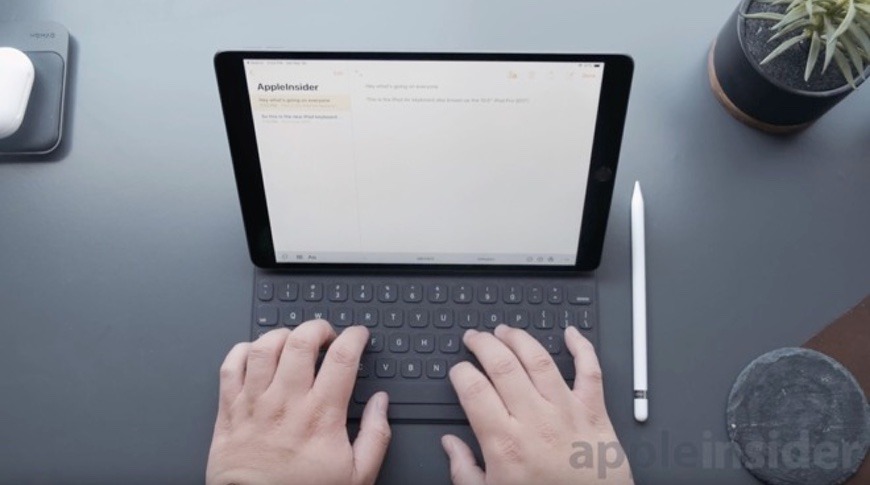
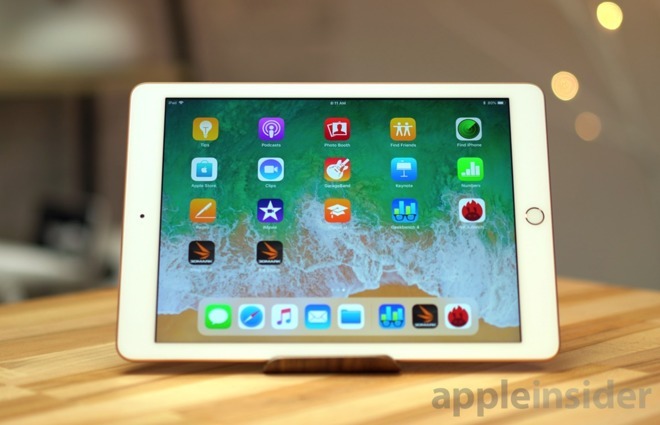
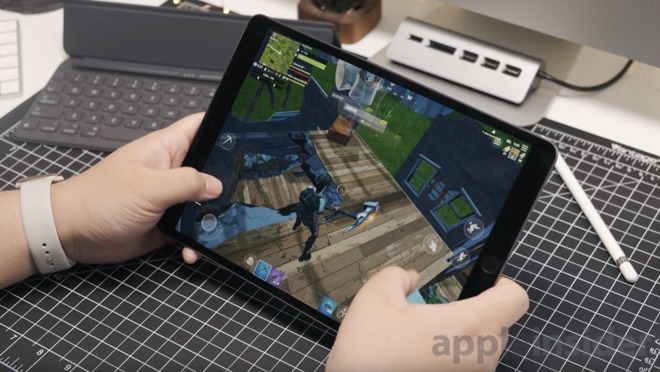
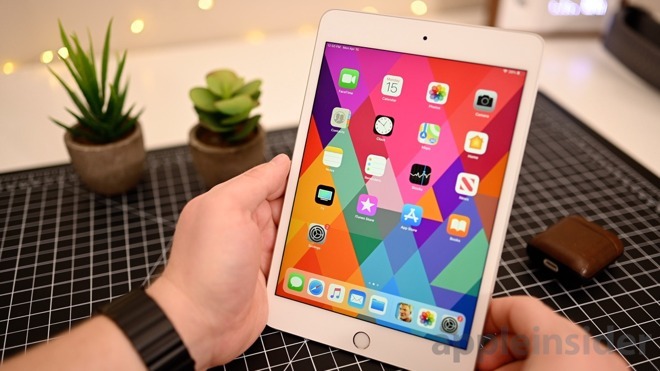
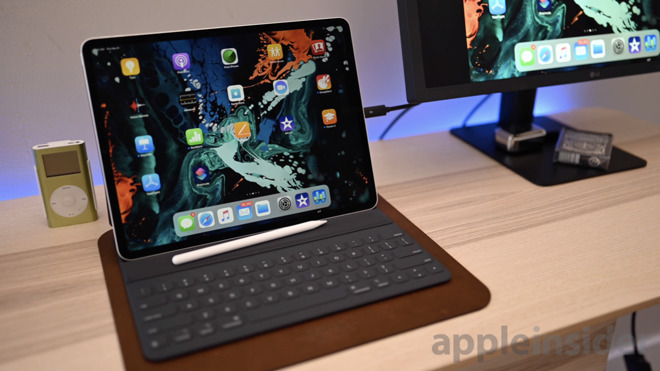
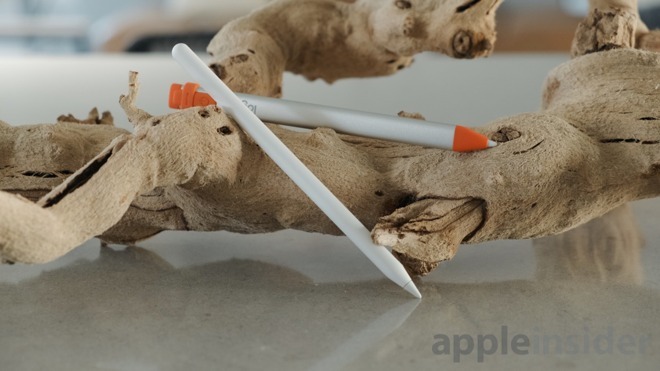
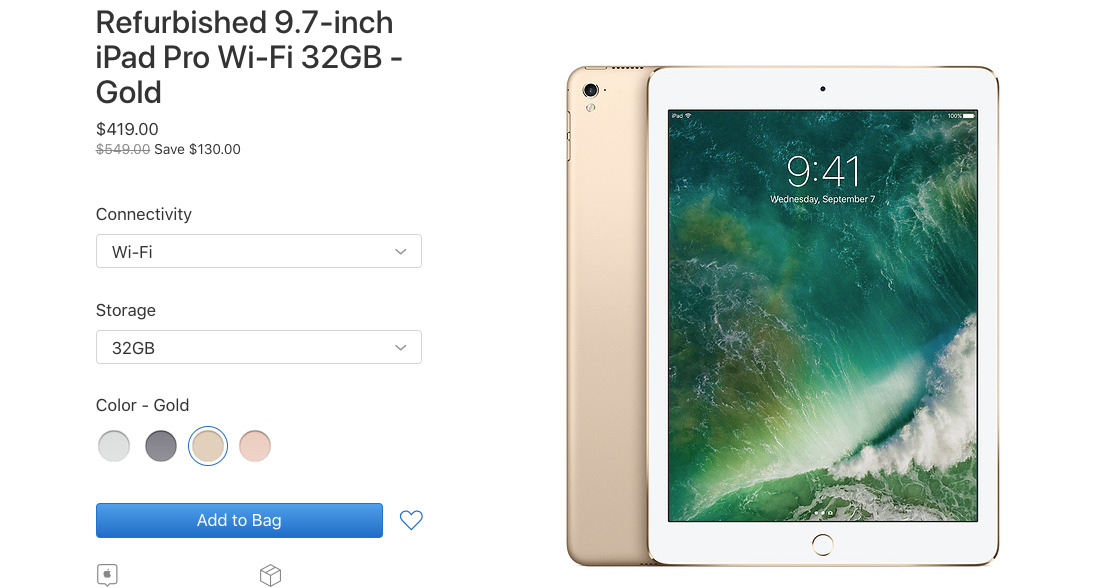







-m.jpg)






 Charles Martin
Charles Martin


 Mike Wuerthele
Mike Wuerthele
 Christine McKee
Christine McKee


 Marko Zivkovic
Marko Zivkovic
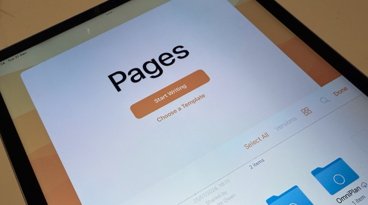
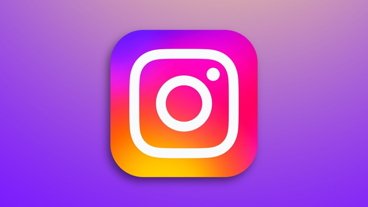
-m.jpg)






5 Comments
My sister has 4 children, the first has now been in college for a year.
My thought was 12.9” would be perfect when the first entered college, but at the time 12.9” was little changed from the original, so she bought a 2 in 1 Acer laptop ($700).
The 2nd child is now getting close to the last year of high school, and looking for a tablet/computer that will finish the last year and hopefully carry her through college (yes, ambitious).
When asking around (taking to college students) the iPad isn’t able to run the course software. I’m not talking about specialized software (mathcad, etc.) but the software needed to manage classes (submit homework? Ebooks, for discounted pricing). I know it can be used to take notes, and write papers, but that isn’t sufficient...
Taking notes with the Apple Pencil I’d think would be a big advantage, but if you need to buy another laptop that’s going to get pricey...
I’m helping with research, and the machine(s) will probably get purchased at Christmas. Currently, the MacBook Pro is favored with the Microsoft Surface number two. An iPad + a Windows laptop is considered, but at that price point the Surface would be better.
The original budget was $1000 but I think I talked my sister up to $1350 (MacBook Pro) to get a machine that could last 5 years (fingers crossed). Bottom line, without a bigger budget the iPad isn’t going to work... and anyone looking to use it as their sole machine needs to talk to the college they’re attending.
I bought into Apple's education spiel when they released the iPad Gen6 and bought one for my (then) 5th grade grandson along with the Logitech keyboard.
He wouldn't touch it. He uses Chromebooks in school and his Mom's crappy HP at home. He does use it for movies though.
Until Apple adds a cursor & mouse/trackpad to the iPad it will remain an output centric device and of little use for "real" work (Unless you're an art student).
Too compromised as an only device.
And I say this as a person using a iPad Pro as my main home machine (and a fair bit at work too) for the last three months since my iMac died. The work around are a lot of work. Get an MBA or low end MBP before iPad only.